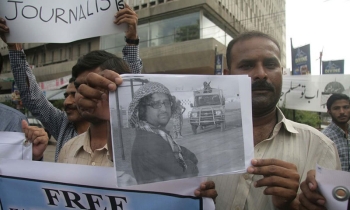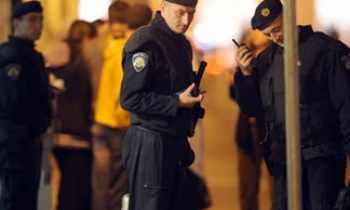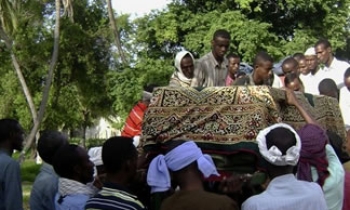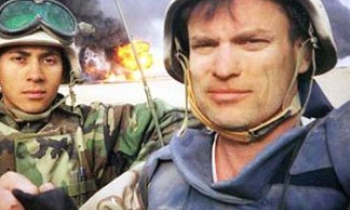The photo was of a motor-cross competitor taking a tumble from his motorcycle. The year, 1955. The award the first ever World Press Photo of the Year. Almost every year since has seen a contest and a winning image. Some of the photos have become legion a naked girl running after a napalm attack in Vietnam; a Buddhist monk who has set himself alight; a lone demonstrator standing in front of tanks on Tiananmen Square; a veiled woman mourning after a massacre in Algeria. Others have set trends, established styles of press photography that can be seen re-emerging in years to come.

That 1955 award came about when some members of the Dutch photojournalists’ union (Nederlandse Vereniging van Fotojournalisten, NVF) had the idea of turning a national competition the Zilveren Camera into an international one. The new international contest marked the 25th anniversary of the NVF, with a public exhibition to be held in December 1955. The impulse behind the idea was that Dutch photojournalists would benefit from exposure to work of international colleagues. Almost immediately, the step was taken from organising a one-off event to creating an annual contest.
From the beginning, the various elements that form the World Press Photo compound were in evidence. The contest was at the core, but its educative and communicative roles were already seen as important, and the exhibition that vital bridge to the public was already integral to proceedings. Soon another element appeared. The first contest catalysed discussion in local newspapers about the nature of press photography; later images sparked even more furious debate. Political controversy also made an early appearance. Then as now, World Press Photo set great store by maintaining its independence. Throughout the Cold War both Russians and Americans sat on the jury their votes usually balancing each other out.
Initially, the contest was run under the auspices of the NVF. In 1960 a separate
foundation was established, and though renamed and reshaped over the years, this forms the basis of today’s organisation. The popularity of the contest and consequent exhibition grew steadily throughout the 1970s. By the 1980s, the exhibition was traveling farther and farther afield, and numbers of entrants had increased substantially.

World Press Photo entered a new phase. The decision was made to professionalise the organisation, employ hired staff, and establish an office that would provide a firm base for the international scope of the contest and exhibition. A strong financial structure was needed for this, and the first corporate sponsors were attracted in 1987.
As exhibitions increasingly reached countries where photographers’ contact with fellow professionals around the world and their access to new creative and technological developments were limited, so they began to spark a demand for some form of local training. The impulse that had been behind the first contest in 1955 that of putting local Dutch photojournalists more in touch with the work of international colleagues would re-emerge to give rise to workshops and seminars.
During this period World Press Photo established itself not only as a platform for photojournalism, but as a catalyst for education of photographers. In 1990, the first such seminar was held in Budapest, and they are now a regular feature of World Press Photo’s activities. Four years later, the first World Press Photo masterclass for talented young photographers was held in Amsterdam setting the tone for what has become an annual benchmark of excellence within the profession.

As World Press Photo celebrates its 50th anniversary, it finds itself in a position where it not only runs the world’s most prestigious contest of photojournalism, but administers the world’s widest-ranging annual photo exhibition, and offers a breadth of related activities that is unmatched.
The 50th anniversary celebrations in Amsterdam over the weekend included the launch of "Things As They Are Photojournalism in Context Since 1955". Commissioned by World Press Photo to mark the anniversary, the book takes an original approach by presenting news and documentary photography as originally published. The history is told through 120 features from international magazines and newspapers, including landmark photo essays and less known publications from around the world. The book was produced by Chris Boot, written by Mary Panzer, and includes an afterword essay by Christian Caujolle.









